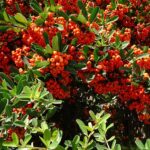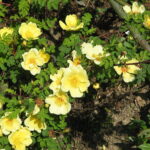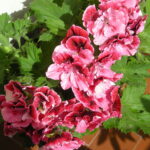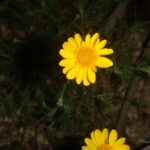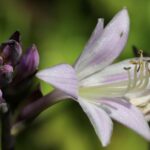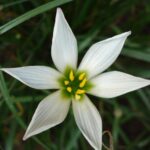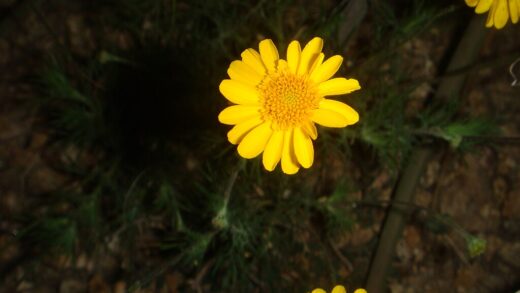Diseases and pests of japanese barberry
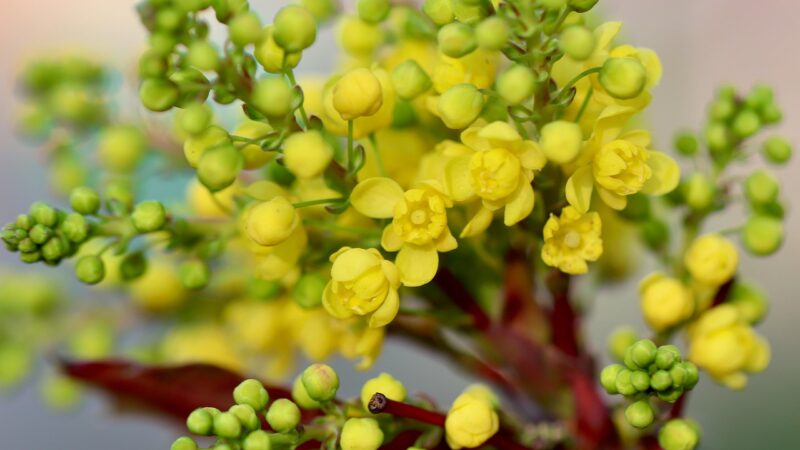
While Japanese barberry is widely regarded as a robust and low-maintenance shrub, it is not entirely immune to challenges from diseases and pests. A proactive approach to plant health, grounded in good cultural practices, is the most effective strategy for preventing and managing these potential issues. Problems are most likely to arise when the plant is under stress, whether from poor drainage, improper planting depth, nutrient deficiencies, or inadequate sunlight. By understanding the most common ailments that can affect this species and the conditions that favor them, a gardener can take preventative measures and intervene effectively at the first sign of trouble, ensuring the long-term vitality and beauty of their plantings.
Fungal diseases are among the most common problems that can afflict Japanese barberry, with pathogens such as rust, verticillium wilt, and powdery mildew being the primary culprits. These diseases are often opportunistic, taking hold when environmental conditions are favorable, such as during periods of high humidity, cool temperatures, or when the plant’s foliage remains wet for extended periods. The presence of these diseases often points to an underlying issue in the plant’s environment, such as poor air circulation or waterlogged soil, which must be addressed for any treatment to be effective in the long term.
Pest infestations, while less frequent than on many other ornamental shrubs, can also occur. The most common insect pests to trouble Japanese barberry are sap-sucking insects like aphids and scale. These pests feed on the plant’s fluids, and while small populations may cause little harm, large infestations can lead to stunted growth, distorted leaves, and a general decline in the plant’s vigor. Monitoring plants regularly for the presence of these pests allows for early intervention before their numbers can build to damaging levels.
Ultimately, the best defense against both diseases and pests is to maintain a healthy, thriving plant. A strong, unstressed shrub is inherently more capable of resisting and recovering from attacks. This involves providing the plant with its ideal growing conditions: full sun, well-drained soil, and proper spacing to ensure good air circulation. By focusing on these preventative cultural practices, the need for chemical interventions can be significantly minimized, promoting a more balanced and sustainable garden ecosystem.
Common fungal diseases
One of the most significant fungal diseases that can affect Japanese barberry is rust. This disease is caused by a specific fungus, Puccinia graminis, which has a complex life cycle that requires an alternate host, typically cereal grains like wheat, to complete its development. On the barberry, the infection appears in the spring as bright orange or yellow-orange pustules on the undersides of the leaves, on stems, and on flowers. Severe infections can cause leaf distortion, defoliation, and reduced plant vigor. While it may not kill the plant, it can be quite disfiguring.
More articles on this topic
Verticillium wilt is another serious, though less common, fungal disease that can be fatal to Japanese barberry. This pathogen is soil-borne and enters the plant through its root system, subsequently clogging the vascular tissues (xylem) that transport water throughout the plant. The symptoms typically appear as sudden wilting and yellowing of leaves on one or more branches, often starting on one side of the plant. Cutting into an affected branch may reveal a tell-tale streaking or discoloration of the sapwood. There is no chemical cure for Verticillium wilt, so management relies on prevention and removal of infected plants.
Powdery mildew is a more cosmetic than life-threatening fungal disease that can appear on Japanese barberry, particularly on plants growing in shady, humid conditions with poor air circulation. It manifests as a conspicuous white or grayish powdery coating on the surface of the leaves and young stems. While it is unsightly, it rarely causes serious harm to the plant, though a severe infection can interfere with photosynthesis and slightly reduce the plant’s overall vigor. Improving air circulation through pruning and proper spacing can often prevent or reduce the severity of powdery mildew.
Anthracnose is another foliar disease that can cause spots and blotches on the leaves of Japanese barberry. The spots may be tan, brown, or black and can sometimes lead to premature leaf drop, especially during wet seasons. As with many fungal diseases, the spores are spread by splashing water from rain or overhead irrigation. To manage these diseases, it is crucial to practice good garden sanitation by removing and disposing of infected leaves and branches, watering at the base of the plant to keep foliage dry, and pruning to improve air movement through the canopy.
Identifying and managing pests
Aphids are small, pear-shaped, sap-sucking insects that can sometimes be found in clusters on the new growth and undersides of Japanese barberry leaves. They use their piercing mouthparts to feed on the plant’s nutrient-rich sap. A heavy infestation can cause the new leaves to become curled, distorted, and yellowed, and may also lead to stunted growth. Aphids also excrete a sticky substance called honeydew, which can attract ants and lead to the growth of sooty mold, a black fungus that grows on the honeydew.
More articles on this topic
Managing aphids on a tough plant like barberry can often be accomplished with simple, non-chemical methods. A strong jet of water from a garden hose can be very effective at dislodging and washing the aphids off the plant. For more persistent infestations, insecticidal soap or horticultural oil can be used; these products work by suffocating the soft-bodied insects and have a low impact on beneficial insects when used correctly. Encouraging natural predators like ladybugs, lacewings, and parasitic wasps into the garden can also provide excellent long-term biological control.
Scale insects are another type of sap-sucking pest that can infest Japanese barberry. These pests are characterized by a hard, waxy, shell-like covering that protects them as they remain stationary on the stems and leaves, feeding on the plant’s sap. They can be difficult to spot and may look like small bumps on the bark. A large population of scale can cause a gradual decline in the plant’s health, leading to yellowing leaves and branch dieback. Like aphids, they also produce honeydew, which can lead to sooty mold.
Control of scale insects is most effective when targeting their vulnerable “crawler” stage, which is the brief period in their life cycle when the newly hatched young are mobile and have not yet formed their protective shells. This usually occurs in late spring or early summer. Horticultural oils are particularly effective at this stage, as the oil suffocates the crawlers. For established, armored scale, the oil can also work by penetrating the shell. Pruning out heavily infested branches can also help to reduce the overall pest population on the plant.
The role of cultural practices in prevention
The most powerful tool a gardener has against diseases and pests is the implementation of sound cultural practices. Creating a healthy growing environment is the foundation of Integrated Pest Management (IPM), as it produces strong plants that are naturally more resistant to problems. For Japanese barberry, this starts with selecting the right planting location. A site with full sun and excellent soil drainage is non-negotiable, as wet feet and shady conditions are the primary stressors that invite root rot and fungal diseases.
Proper spacing and pruning are also critical preventative measures. Planting shrubs far enough apart to allow for good air circulation at their mature size is essential. This helps the foliage to dry quickly, creating an environment that is inhospitable to fungal spores. Annually thinning out the interior of the shrub by removing a few of the oldest canes and any crossing branches further enhances air movement and sunlight penetration into the canopy. This simple practice can dramatically reduce the incidence of diseases like powdery mildew and rust.
Watering techniques play a significant role in disease prevention. Using soaker hoses or drip irrigation to apply water directly to the soil at the base of the plant is far superior to using overhead sprinklers. Overhead watering wets the foliage, which can create the ideal conditions for fungal pathogens to thrive, and much of the water can be lost to evaporation. By keeping the leaves dry and delivering water efficiently to the root zone, the risk of many common foliar diseases is minimized.
Good garden hygiene, or sanitation, is another key component of prevention. This involves promptly removing and disposing of any diseased leaves, stems, or branches as soon as they are noticed. In the autumn, cleaning up and removing the fallen leaves from around the base of the plant is important, as this debris can harbor overwintering fungal spores and pest eggs. A clean garden environment reduces the sources of inoculum for the following season, breaking the life cycle of many common pathogens and pests.
Addressing invasive concerns
Beyond traditional pests and diseases, a significant issue associated with Japanese barberry is its status as an invasive species in many parts of the world, particularly in North America. The plant produces abundant, bright red berries that are attractive to birds and other wildlife. These animals consume the fruit and then disperse the seeds over wide areas, including into natural woodlands and forests. The barberry can then germinate and establish itself, outcompeting native vegetation and disrupting the local ecosystem.
The ecological impact of invasive Japanese barberry is substantial. It forms dense thickets that shade out native understory plants, including wildflowers and tree seedlings, thereby reducing biodiversity and hindering forest regeneration. Research has also shown that these dense stands can alter the soil chemistry and create a more favorable microclimate for ticks, including those that carry Lyme disease. This makes the management of its spread not just a horticultural issue but also a public health and environmental conservation concern.
Responsible gardeners can play a crucial role in mitigating this problem. The first step is to be aware of the plant’s invasive potential and to check its status with local authorities or conservation organizations before planting. In areas where it is known to be invasive, the most responsible action is to refrain from planting the species altogether or to choose from a growing number of sterile or non-fruiting cultivars that have been specifically developed by horticulturalists to address this issue. These sterile varieties offer the same ornamental qualities without the risk of contributing to its spread.
For those who already have fertile, seed-producing Japanese barberry shrubs in their landscape, management strategies can be employed to prevent seed dispersal. One effective method is to shear the plants after they have finished flowering in the spring. This removes the developing berries before they have a chance to mature and produce seed. While this requires annual diligence, it is an effective way to enjoy an existing plant without allowing it to contribute to the local invasive population, demonstrating responsible stewardship of the garden and the surrounding environment.
Verticillium wilt and root rot
Verticillium wilt is a particularly insidious disease because the fungus, Verticillium dahliae, can persist in the soil for many years, even without a host plant. This makes management extremely difficult once it has become established in a garden. The fungus infects the roots and systematically clogs the plant’s water-conducting tissues. There are no effective chemical fungicides available to homeowners to cure this disease. Therefore, prevention and management are the only viable options for dealing with this serious pathogen.
Preventing Verticillium wilt begins with sourcing plants from reputable nurseries to ensure they are disease-free. It is also crucial to avoid planting Japanese barberry in areas where susceptible plants, such as tomatoes, potatoes, or maples, have previously shown symptoms of the disease. Improving soil drainage and avoiding high-nitrogen fertilizers can also help, as overly vigorous growth can sometimes make plants more susceptible. If a plant is confirmed to have Verticillium wilt, it should be removed and destroyed, including as much of the root system as possible.
Root rot is another significant threat, caused by various soil-borne pathogens, most commonly Phytophthora species. This disease is almost exclusively a problem of poorly drained, waterlogged soils. The pathogens attack the root system, causing it to decay and lose its ability to absorb water and nutrients. Above-ground symptoms mimic those of drought stress and include wilting, yellowing leaves, and branch dieback, which can be confusing. However, an inspection of the roots will reveal that they are dark, soft, and mushy.
Prevention is the only effective strategy for managing root rot. It is absolutely essential to plant Japanese barberry in a location with excellent drainage. If the native soil is heavy clay, it must be amended to improve its structure, or the plant should be placed in a raised bed. Correct watering practices are equally important; the soil should be allowed to dry out between waterings. Once a plant is severely infected with root rot, it is very difficult to save, and removal is often the best course of action to prevent the spread of the pathogen in the soil.








